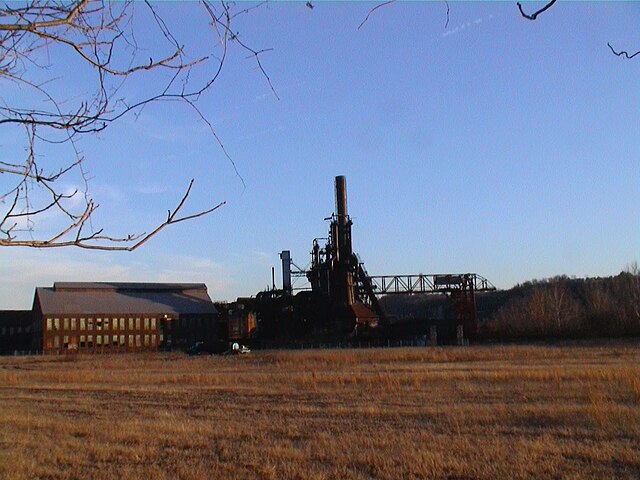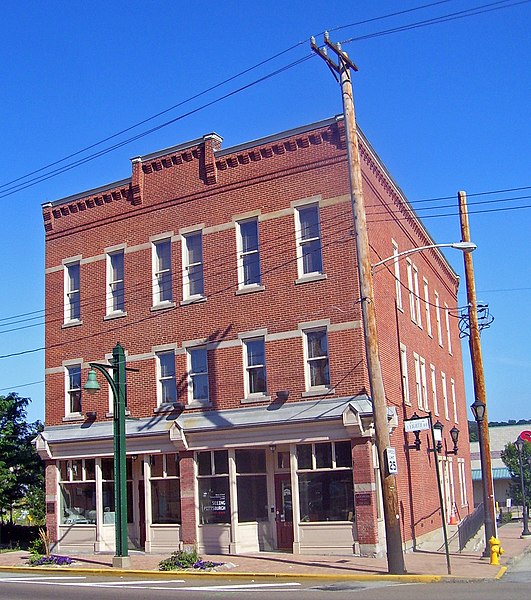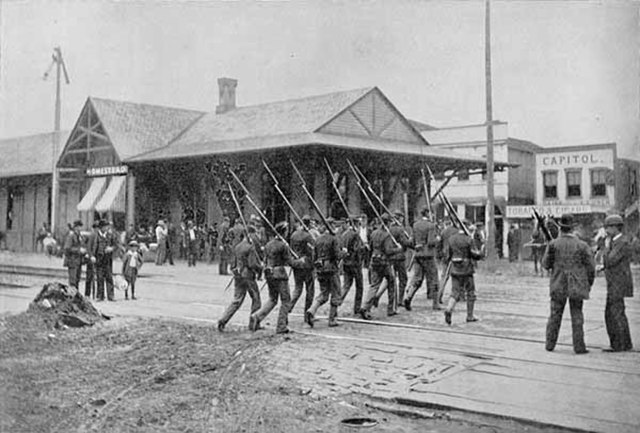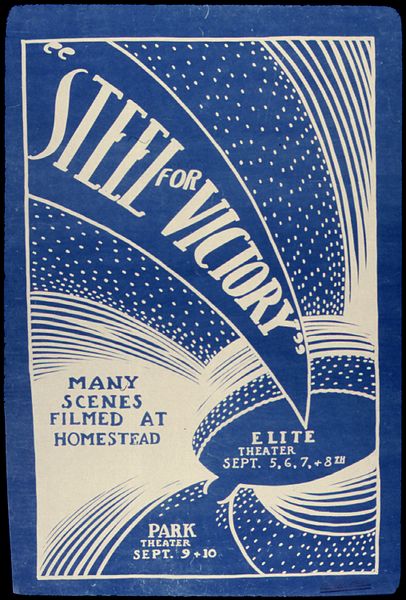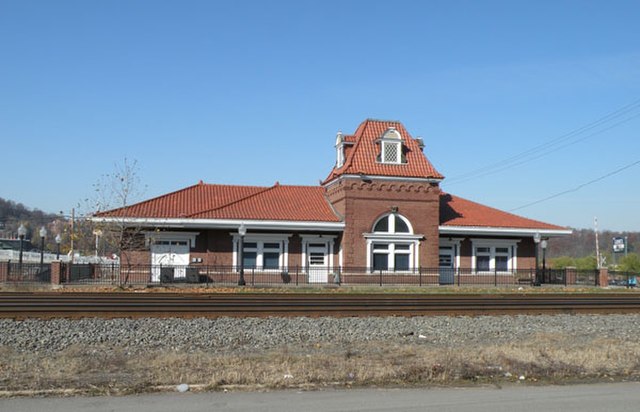Homestead Steel Works was a large steel works located on the Monongahela River at Homestead, Pennsylvania in the United States. The company developed in the nineteenth century as an extensive plant served by tributary coal and iron fields, a railway 425 miles (684 km) long, and a line of lake steamships. The works was also the site of one of the more serious labor disputes in U.S. history, which became known as the Homestead strike of 1892.
Steel workers gaze on as molten steel is poured from ladle to casts at Homestead Steel Works.
The water tower of the pumphouse is one of the few structures remaining from the 1800s. Now, it provides restrooms within for visitors and cyclists traveling on the Great Allegheny Passage trail.
Barge and The Waterfront shopping center
Carrie Furnace, a blast furnace across the Monongahela River from the main site
Homestead is a borough in Allegheny County, Pennsylvania, United States, along the Monongahela River 7 miles (11 km) southeast of downtown Pittsburgh. The borough is known for the Homestead strike of 1892, an important event in the history of labor relations in the United States. The population was 2,884 at the 2020 census. It is part of the Pittsburgh metropolitan area.
The Bost Building, built in 1892, was AA union headquarters during the Homestead Strike that year, and today is a National Historic Landmark and museum of the Rivers of Steel National Heritage Area
State militia passing the railroad station to disperse groups of strikers.
"Steel for Victory. Many scenes filmed at Homestead."
Homestead Pennsylvania Railroad Station, built circa 1890, on Amity Street in Homestead




